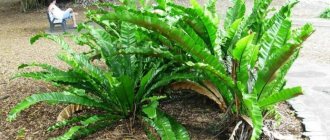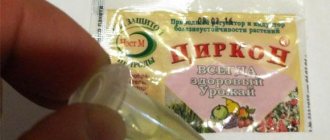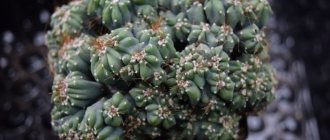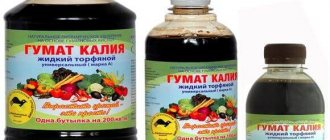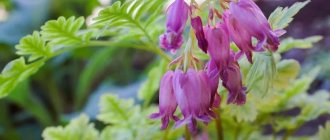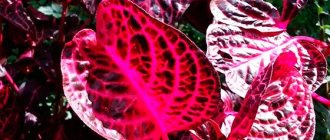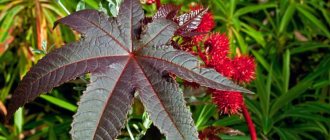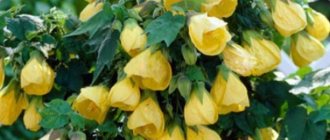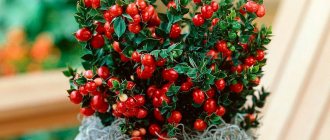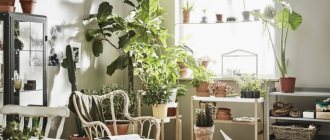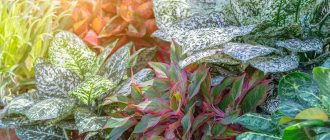Peat is often included in ready-made mixtures for seedlings. But is it suitable for planting seeds in its pure form? What are the advantages and disadvantages of peat? What needs to be done to improve its qualities? We will answer all these questions in detail. First, we want to assure you that peat is quite suitable for seedlings. But it is better to use it as part of soil mixtures.
At the Gruntovozov company you can buy peat for seedlings with delivery by dump trucks from 3 cubic meters in Yekaterinburg and nearby settlements.
Price for Peat moss for seedlings from 490 RUR. for 1m3 Order
What is peat substrate and its composition
Peat substrates are the basis for growing plants, which consists of a mixture of various components. The mixture depends on the purpose. They may include different layers of peat, sand, lime, garden soil and other additives. Each of the contents gives the substrate certain qualities.
Since peat occupies a large part of the substrate (up to 50-100%), we will consider its main types.
- High-moor (light brown) peat is an organic substance that is extracted from the upper layers of bog peat bogs. It is usually not used pure, as it has a high level of acidity. There are plants that need high-moor peat for feeding and mulching due to its pH level. If necessary, lime or ash is added to the peat for deoxidation. It stores well and harmful bacteria do not take root in it.
- Lowland (black) peat is formed as a result of the decomposition of particles of tree species and mosses in swampy areas. This happens without oxygen with the help of microorganisms in the low-lying layer. Suitable for growing vegetable and flower seedlings and serves as part of compost. Due to its black color, it warms up quickly, and due to its loose structure, moisture and air exchange are not disturbed in it.
- Transitional peat is created from parts of highland and lowland peat. It contains rotted parts of moss and other plants. Such peat does not allow the development of infections and absorbs moisture well. Most often used as bedding for birds and animals.
Extraction of peat for peat substrate
Additional components of peat substrate:
- Agroperlite (10%-50%) – distributes moisture, improves air exchange and drainage;
- Clay – retains moisture;
- Sand - gives the mixtures looseness and porosity, which ensures the penetration of water and air to the roots of plants;
- Hydroreagent – quickly saturates the substrate and distributes moisture.
The benefits of peat for plants
Getting into the ground even in small quantities, these beneficial substances stimulate the rapid growth of garden crops.
First of all, the spray does not affect the root system of plants, but the ground, the soil.
During use, peat is mixed with the soil and it is saturated with all the necessary components.
As a result, more oxygen appears in the soil, as if it begins to breathe, passing this opportunity on to the plants.
Experts note that what is most beneficial is not the natural, undiluted powder, but a substance mixed with other materials. Peat is especially necessary for soils with a high content of clay and sand, which block the proper supply of moisture and nutrients to the root systems.
It is important to ensure that the peat contains as little humus as possible from the results of the vital activity of living organisms, otherwise the soil will not begin to be fertilized, but will simply rot.
In general, peat composition is useful as an emergency remedy for drying crops that have lost color, moisture and strength for further growth. You can feed both the entire bed with the crop and especially the affected plants.
This substance can be created independently by adjusting the humus content, or it can be purchased at a specialized store by finding detailed information on the packaging about the humus content in a specific mass of peat.
What plants need peat?
For some plants, the use of peat is vital - without it they simply will not be able to develop adequately.
Examples of such needy plants are:
- blueberry;
- hydrangea;
- raspberries;
- heather;
- potato;
- strawberries;
- tomatoes;
- some varieties of cucumbers;
- roses.
Advantages of peat substrate
- Easy to use. Ready-made peat mixtures that do not require special preparation are available for sale.
- The presence of useful substances in the composition. The substrates are based on peat, which contains many essential macro- and microelements. Also, many manufacturers add mineral fertilizers and other components to the mixture.
- Environmental friendliness. Suitable for the production of organic vegetables.
- Sterility. It is free of bacteria, fungi, harmful chemicals and weed seeds. This makes the material ideal for growing seedlings, which are quite vulnerable to the environment.
- Moisture capacity. Peat absorbs and retains water well. Ideal for sowing seeds and mixing with other growing materials.
- Air holding capacity. Roots and beneficial microbes in the root zone require a constant supply of oxygen to respire and maintain basic functions.
- Looseness. The peat substrate absorbs water well, but does not compact. It can be used independently or added to heavy soils to improve air exchange.
- Availability. Ready-to-use substrate can be found at any garden store.
Before use, the peat substrate must be loosened and moistened
Methods
There are 2 ways to organize compost, which of them is preferred by the summer resident himself.
Local composting
A layer of peat of 50-60 cm is laid out at the selected location. Then manure of 70-80 cm is laid out in a continuous layer or in heaps. Moreover, the width is made 1-1.5 m less than peat, then the top is covered with a layer of peat, 50-60 cm. Covering the manure from all sides. This method is preferable in winter.
Layer-by-layer
Peat is distributed over a width of 4-5 m, the length of the area is possible, the layer thickness is 50 cm, then a layer of manure is laid, then peat again, and so on several times, the height of the finished compost heap is 2 m. The last layer is necessarily peat.
Peat based fertilizer
Fertilizer manufacturers create fertilizers for plants. They make it for those who cannot make a compost heap on their own. Made in the form of granules, which are added directly to the wells. And liquid fertilizer, which is absorbed much better. It is watered on plants and used as a growth stimulator for seeds.
Peat oxidate
Economical plant nutrition, which is much cheaper than imported analogues. Helps plants accumulate nutrients, improves soil structure, and prevents toxins from entering the plant.
It contains amino acids, monosaccharides, proteins, humic acids, minerals and sulfic acids. When using, be sure to dilute with water.
Peat extract
For manufacturing, a low-lying type is used; using electro-hydraulic processing, a hood is obtained. The fertilizer is very convenient to use. Contains many useful substances. Recommended for areas where there is no need to fertilize the soil.
Disadvantages of peat substrate
- Dryness. Although peat can hold 10 times its weight in water, when it dries completely, it takes a long time to absorb the moisture. Therefore, before sowing, you need to make sure that the substrate is sufficiently moist or mix it with soil and other materials.
- Non-renewable resource. The process of decomposition of the mixture's base, peat, takes thousands of years. This is the main reason why many environmentally conscious manufacturers are looking for an alternative.
- Price. This is not the most expensive growing material, but it is also not cheap. But in return, when used correctly, the plants will grow on a sterile light substrate and form strong roots before planting in the ground, which will bear fruit in the future.
Types of peat substrates by purpose
On sale there are universal ready-made mixtures and substrates intended for specific crops. They differ in composition, acidity, content of nutrients and additional components. Below are the main types of peat substrates:
- Mixture for growing seedlings. In such mixtures, the main volume is occupied by peat, which is needed in the initial stages of crop growth. The peat mixture also contains useful microelements.
- Substrate for strawberries. Strawberries prefer an acidic environment and, taking this into account, special mixtures are created for it. In addition to peat, the substrate contains sand, and this combination allows young plants to quickly take root in a new place.
- Universal peat mixture. The substrate is suitable for growing seedlings and seedlings, as well as adding to the soil to improve its properties (moisture capacity, breathability, etc.).
- Substrate for flowers. The basis for year-round cultivation of indoor plants and potted flowers. Helps improve flowering quality and plant health.
- Mixture for coniferous plants. It is used in nurseries for the production of seedlings of large and small trees.
- Peat mixture for mushrooms. A specially created basis for growing such mushrooms (champignons, oyster mushrooms, chanterelles, etc.).
Ready peat substrate
Soil disinfection
Disinfection of soil for seedlings significantly improves plant health. During treatment, pathogenic organisms (fungi, bacteria, pests) and weed seeds overwintering in the soil are destroyed.
There are several ways to disinfect soil.
Chemical disinfection
For chemical disinfection of the substrate, you can use preparations containing propamocarb and aluminum fosetyl - Previcur Energy, which protect plants from blackleg caused by fungal-like organisms. Treatment should be carried out 2-3 days before using the substrate for sowing or picking.
Biological preparations (“Glyokladin”, “Fitosporin”) are also used to treat soil for tomatoes and peppers.
The soil is often treated with a solution of potassium permanganate, but this method does not give reliable results, disinfecting only the upper layers of the soil.
Thermal decontamination
This method of soil disinfection involves heating it with steam or heat. The soil is heated with steam at a temperature of 90-100 °C for 20-30 minutes to a depth of 25-30 cm. During treatment, the soil must be covered with a heat-resistant film to prevent heat loss. This treatment effectively removes fungi, bacteria and pests (wireworms, nematodes) from the soil.
You can pour it into an old baking tray and bake the soil in the oven at 90°C for 20 minutes.
Soil for sowing seedlings is a special mixture of substrates designed specifically for generative propagation of plants, i.e. sowing seeds of vegetable crops, garden and potted plants. You can easily prepare such soil yourself or buy a ready-made substrate in the store. It is very important to prepare high-quality, fresh soil, of the correct composition, uncontaminated with pathogens, otherwise the seedlings will not be able to develop normally and will quickly get sick.
How to use peat substrate
Peat is actively used in home gardening and industrial farms. It is intended for growing seedlings, potted plants and adding to the soil to improve its properties. Peat substrate is often used to mulch the soil and insulate wintering plants.
When producing the substrate, it is pressed at a humidity of 40-60%. Therefore, after opening it, the peat needs to be loosened and moistened. For good oxygen saturation, the substrate is left for a day after opening.
Before using the substrate directly, it must be checked for the presence of mold, because during production, harmful pathogens that can cause it get into it.
Also, to avoid problems with peat, all conditions for the development of beneficial organisms should be created. This can be done through the use of biological products: Mycofriend Mycorrhiza, Azotophyte and other bacteria, fungi, amino acids, phytohormones, etc.
Soil mixture for seed germination
Since the fall, I have been sifting garden soil to make soil mixtures and storing it in the greenhouse on racks. But this soil is not suitable for sowing seedlings. It is possible to plant already grown seedlings into it, but for seed germination the substrate must be lighter and smaller.
To sow seeds, I prepare a special mixture of equal parts of prepared garden soil and peat substrate. To sift the soil, I hung a swing sieve with a fine mesh to the beam in the greenhouse. When rocking the swing, the large fraction remains in the sieve, and the fine fraction is sifted onto cellophane film.
Storage of peat substrates
Peat in bags is stored for no more than 6 months. Since this is an organic material, over time the processes of decomposition and proliferation of microorganisms begin in it. This leads to changes in the physical and chemical properties of the substrate.
For up to 1 year, peat substrate can be stored closed in packages, in a dry place out of direct sunlight. Do not allow the peat substrate to get wet during storage. If the substrate has been in storage for more than 2 years, then it can only be used for mulching the soil.
Dried peat for the production of peat substrate
Share in the comments what peat substrate you use for growing plants. Ready-made or do you mix it yourself?
If you find an error, please select a piece of text and press Ctrl+Enter.

